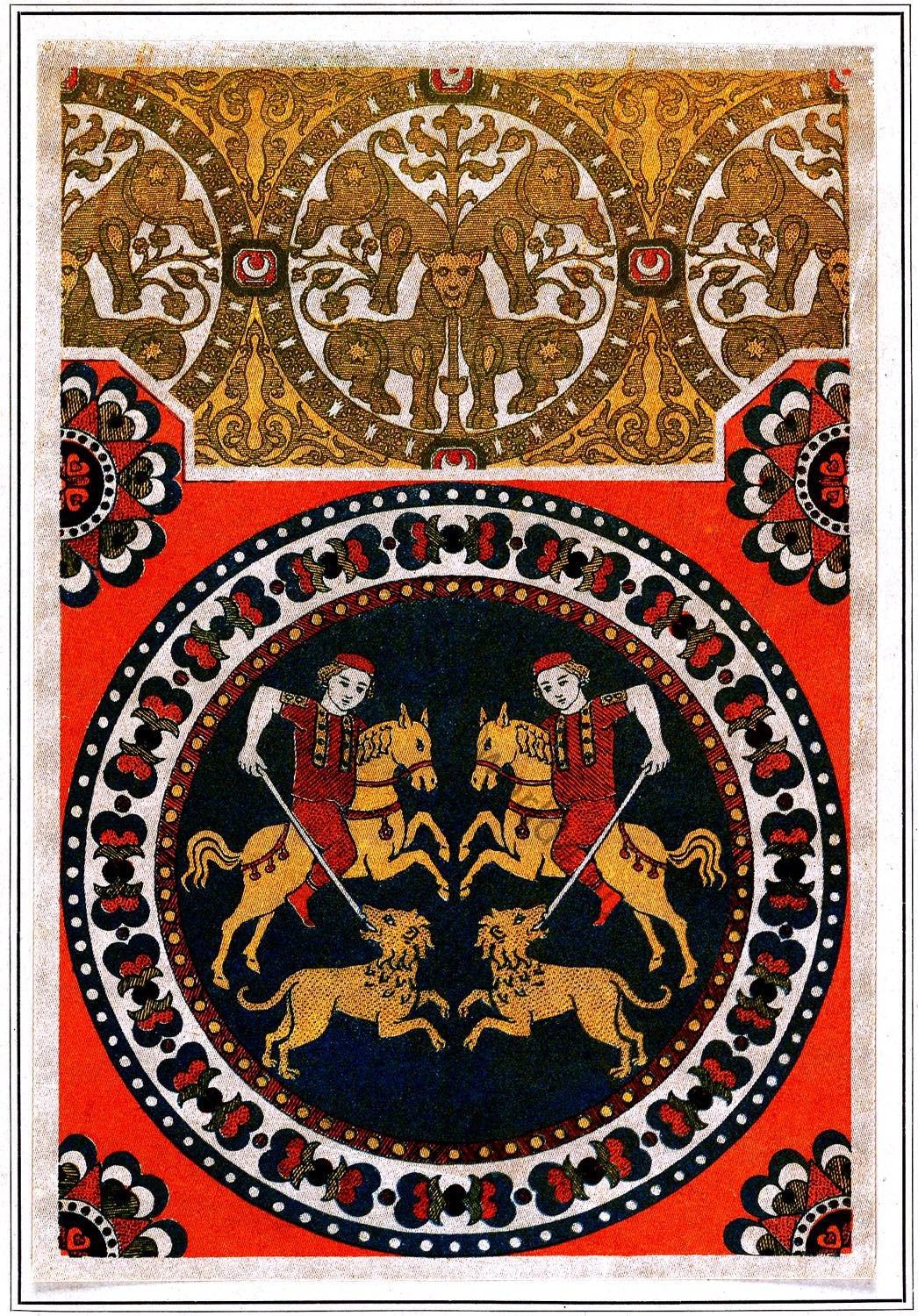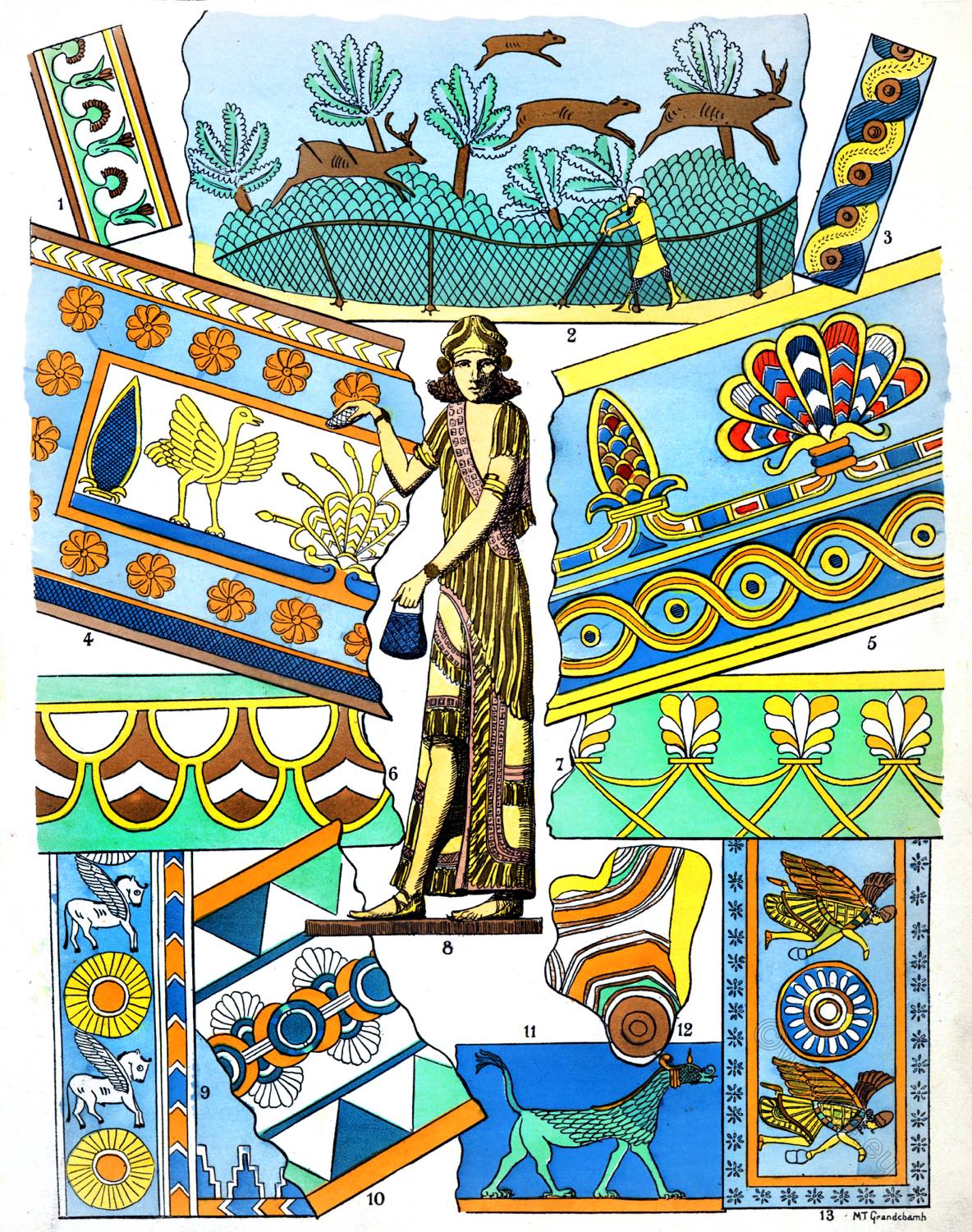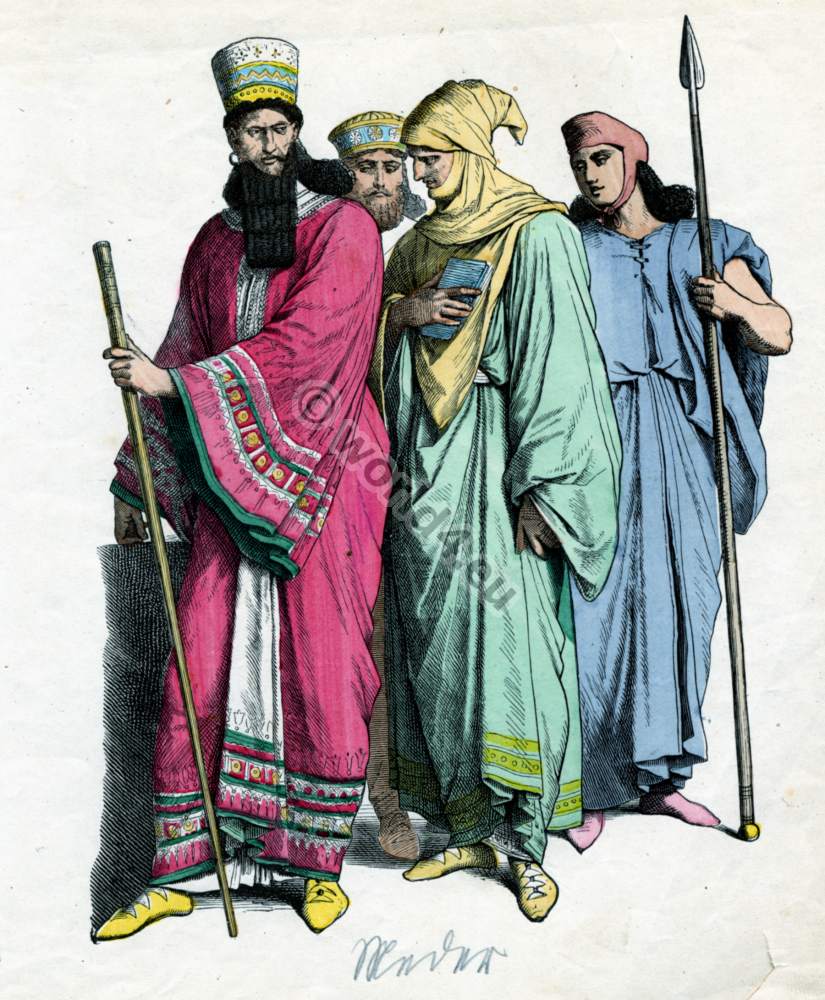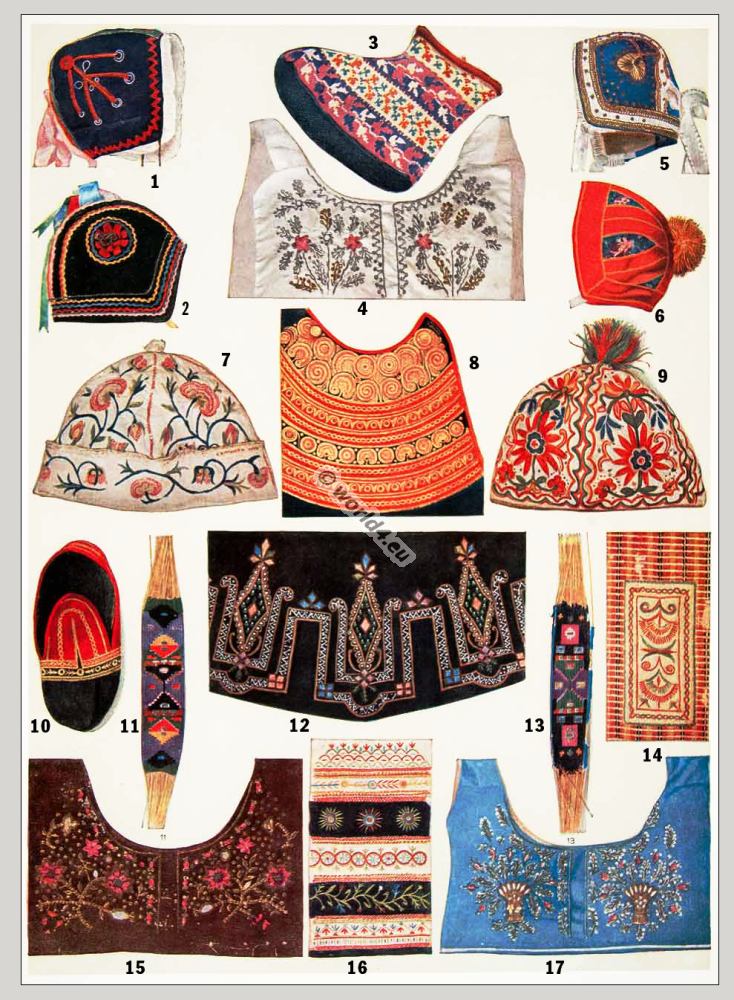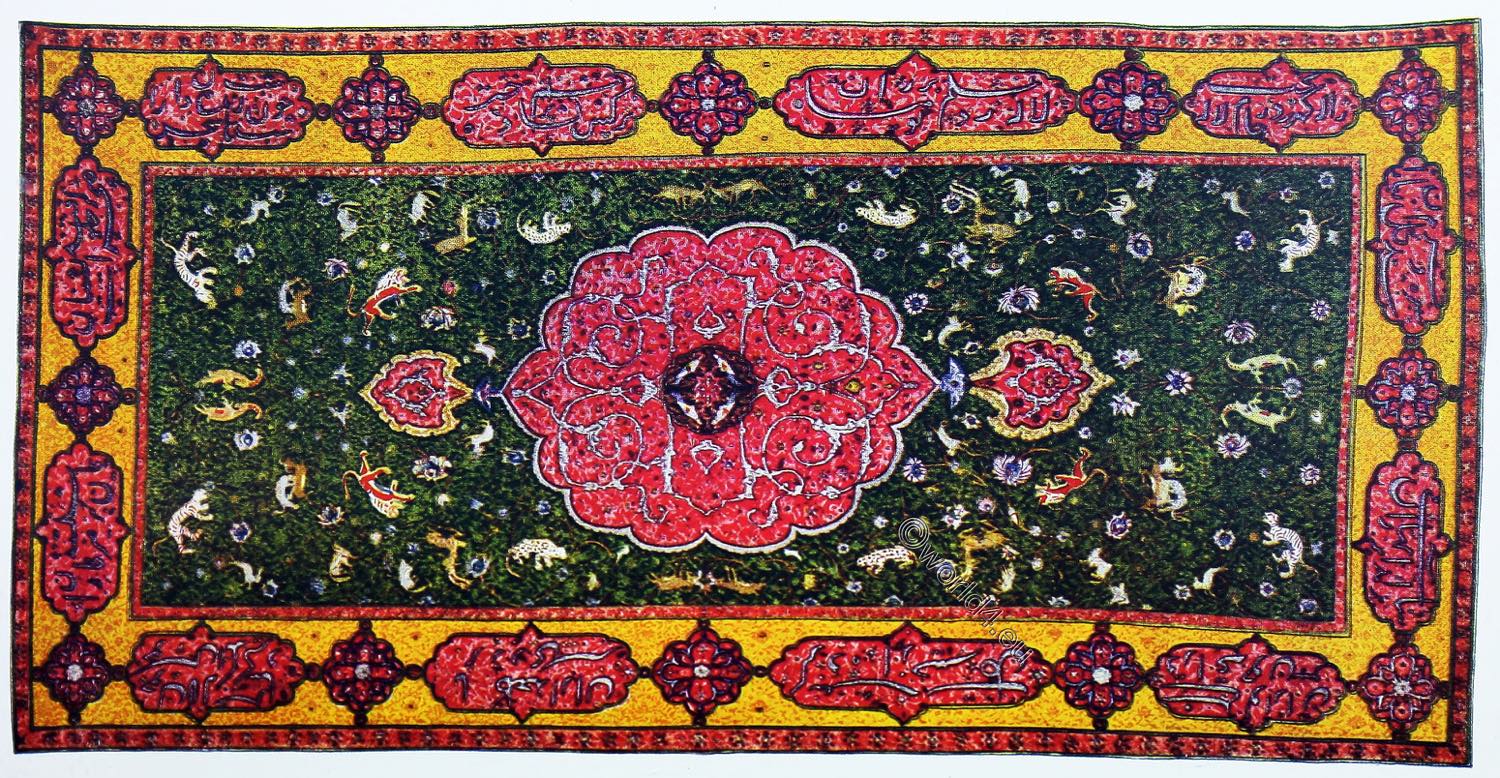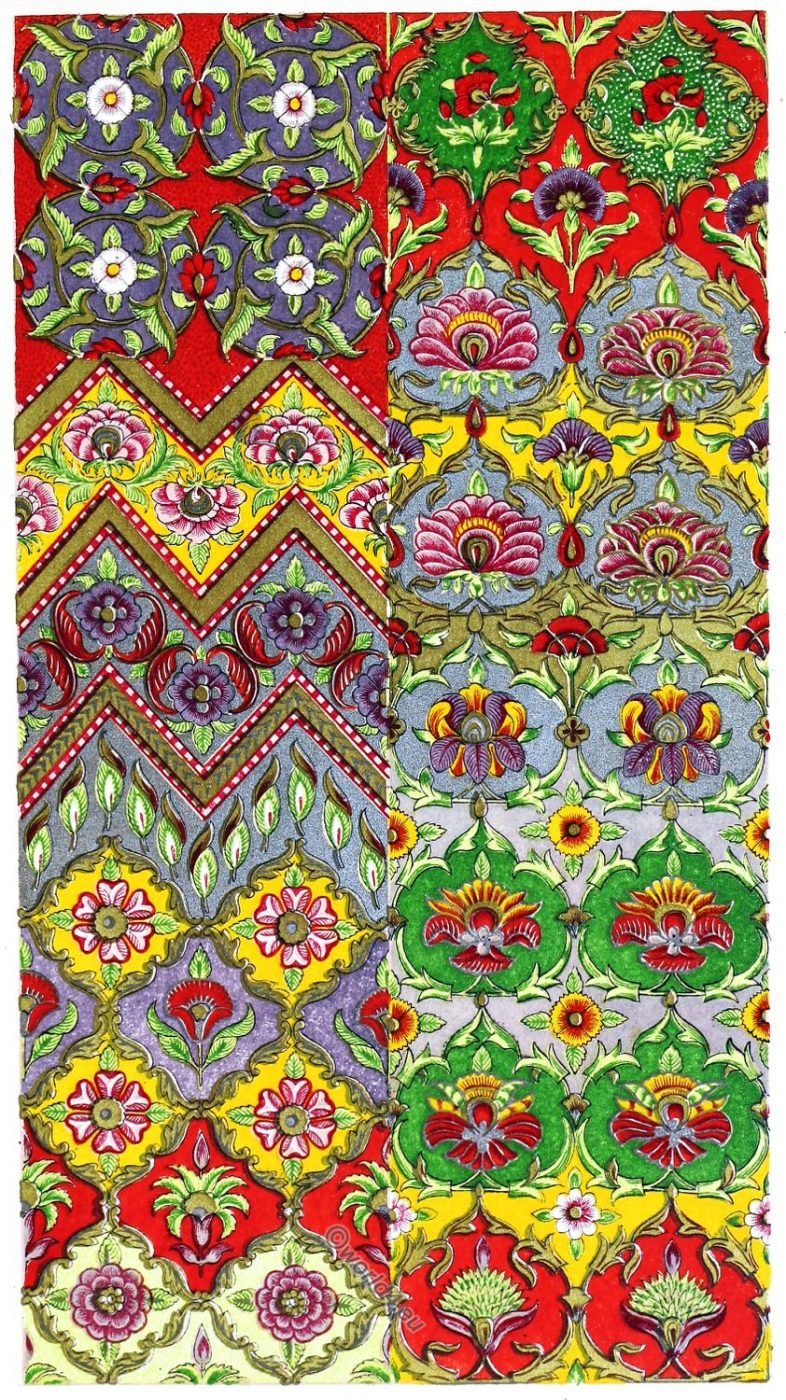
Sheet of designs for textile fabrics, reproduced from the pattern-book of a persian designer.
NOT the least interesting of the varied acquisitions of the Museum of Ornamental Art, is a volume containing several hundred designs for textile fabrics. Although complete, and in its original Oriental binding, the book does not contain any written text, so that there is no clue to its authorship. It is supposed to have been a manufacturer’s or designer’s pattern-book, and is clearly of Persian origin.
The several designs are skillfully painted in distemper colors on silk paper, and are profusely enriched with gold and silver, sufficiently denoting the costly nature of the tissues they are intended to represent. The volume appears to be of some antiquity, probably dating as far back as the 17th century; but from the prescriptive permanence of Oriental art, nothing definite on this head can be gathered from the designs themselves. The beautiful patterns, grouped together with such profusion in our plate, are based on the soundest principles of design. The forms and leading lines of the ornamental details are in themselves most graceful, and the colours are well contrasted and perfectly arranged as to quantity.
Persian ornament, whilst based on precisely similar rules, differs in many essential respects from the other main Asiatic styles, and has a distinctly marked national character conventionalized floral ornaments, directly based on natural types, being of constant occurrence; whilst the gaiety and freshness of the coloring, in which pink, fresh pale greens, scarlet and brilliant yellows, are the prevailing tints, impart a delicate, and if it may be so designated, feminine character of grace and refinement to the compositions.
Source: The treasury of ornamental art, illustrations of objects of art and vertù by Sir John Charles Robinson. Marlborough House (London, England), 1858.
Related
Discover more from World4 Costume Culture History
Subscribe to get the latest posts sent to your email.

